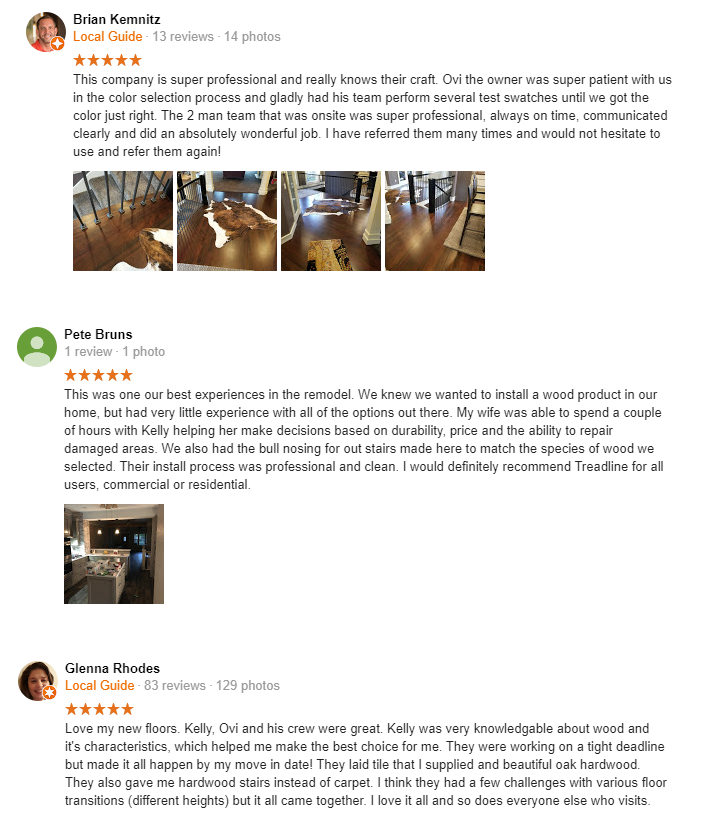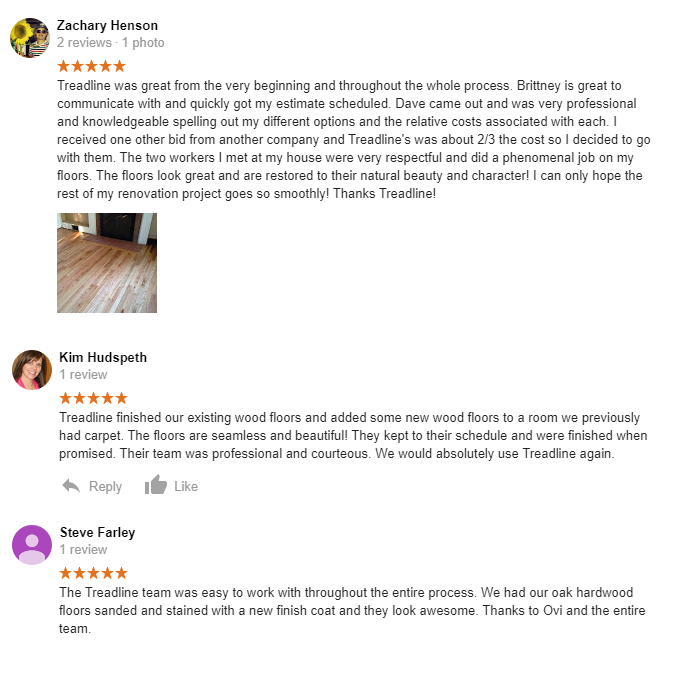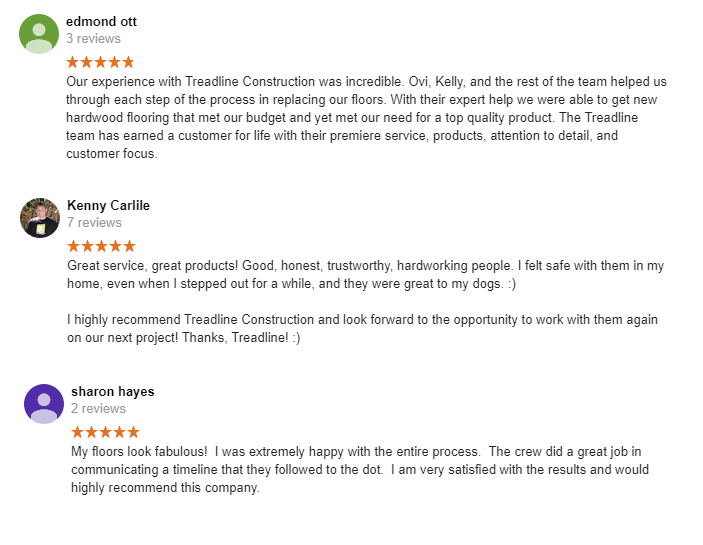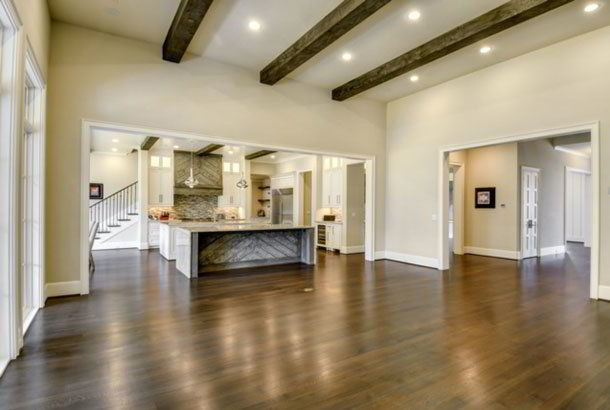Portland Hardwood Floor Installation
Hardwood Floor Installation Services
Installing hardwood floors is one of the best investments you can make for your home. In many circumstances, installing hardwood floors will create a return on your investment that surpasses the original cost of installation. Whether you’re remodeling and want to replace carpeting, or if you’re just trying to reduce your maintenance, hardwood floors are the way to go. But where to start?

Contact Us (503) 855-3740
Decide What Type of Hardwood Flooring You Want
There are a number of types of hardwood flooring options available – solid and engineered hardwood. Both solid and engineered hardwood floors are made from real wood, so both are environmentally friendly.
Solid Hardwood Flooring
Solid wood flooring is precisely what the name suggests: a solid piece of wood is sawn from a tree. The thickness can vary, but commonly ranges from 5/16” to 3/4″. Widths typically range from 3” to 8” wide.
One of the advantages of solid wood flooring is that it can be sanded and refinished several times. Solid wood floors are perfect for practically every room in your house.
There are a variety of available species in solid hardwood flooring including oak, ash, birch, maple, and others. Each type will offer a different look and feel. Hardwood floors are now being made with more sophisticated technology, making them more durable and longer lasting. They also come in a wide selection of colors to choose from. Solid hardwood floors are available in both pre-finished and unfinished/ sand and finish in place options.
Engineered Hardwood Flooring
Engineered wood flooring is manufactured using several layers of plywood, with a layer of solid hardwood on top. Engineered wood floors vary in thickness ranging from 3/8″ to 3/4″ and widths from 3″ to 10″; the thickness of the top hardwood layer ranges from .6 millimeters to 7 millimeters, and determines how many times it can be refinished in the future. Engineered hardwood is typically a pre-finished option, though there are some unfinished alternatives.
The advantages of engineered wood floors are many. For one, engineered wood flooring helps conserve wood supplies (Lowering the cost to you): because for every 1 square foot of ¾” solid wood flooring made, it’s possible to manufacturer approximately 4x that amount into engineered wood flooring.
Engineered hardwood floors also offer superior stability due to the multiple layers of wood. They also have better resistantance to temperature and humidity changes, which means they can be installed anywhere in the home including higher humidity areas such as basements, and hold up better in the kitchen.
Decide how to install the hardwood floor
There are three methods for installing your hardwood flooring. They are: Nail-Down, Floating and Glue-Down
Nail-Down Hardwood Floors
This is the most common method of installation. The both types of wood flooring mentioned above uses a tongue-and-groove design to keep the boards together. The nail is driven through the tongue at a 45˚ angle and then hidden by the groove in the next board. Top nailed floors are another option, and are simply nailed through the top of the board.
Floating Hardwood Floors
A floating floor is simply a wood floor unattached to the subfloor below. An underlayment is first put down over the planks, plywood, OSB or concrete subfloor. Then the tongue-and-groove flooring is laid on this. The benefits of floating floors are that they are easier to install, which saves labor costs, and they allow for expansion due to changes in moisture or temperature, so they won’t crack or split, and makes them ideal for basements and wet conditions.
Glue-Down Hardwood Floors
By gluing down your hardwood flooring, the wood is permanently adhered to the subfloor. This is advantageous for numerous reasons. First, a glue-down floor is sturdy and unmovable. It will remain in place for many decades. Second, by gluing the floor to the subfloor, noise is reduced when walking on the floor.
Decide Color and Width
Wood flooring comes in an infinite amount of colors. A few guidelines will help you in achieving the look you want and will be happy with years down the line.
Size of room, ceiling height, wall color and room furniture should be your chief considerations when choosing a color for your wood floor. The colors must complement each other in order to get a pleasing aesthetic. For instance, avoid using dark colors in smaller rooms that are painted. This will make the room feel smaller and more confined. However, in larger rooms, darker colors bring out the room’s warmth and accentuate other décor elements.
If you have a family with small children and want to hide scratches and dents, you may want to consider going with a natural color using a matte finish. This also helps with concealing dust. Choosing a pre-finished floor with ‘hand scraped’ or ‘wire brushed’ texture will help to mask any blemishes.
Typically, you’ll want to refrain from having your wood floor color exactly match that of the rest of the wood in your house, such as the furniture, staircase, mantel, base, or paneling. You’ll want a color that contrasts and complements those colors.
When deciding what color to go with, it’s important to get samples. We can provide you with as many samples as you need in order to place them on the floor near your cabinets, furniture and walls, giving you a better idea of how this will look when installed. You’ll also be able to see how they look at different times of the day, such as morning or evening, or in different weather such as a rainy day.
Come in to our Tualatin, Oregon showroom to view some of the most popular, unique, traditional and modern flooring options available.
Contact Us (503) 855-3740
Contact Us (503) 855-3740
Request a Service
Our Services
Customer Reviews




Memberships

Featured On


Contact
Treadline Hardwood
4030 SW Borland Rd
Tualatin, Oregon 97062
Phone: (503) 855-3740
Email: treadline1@gmail.com
Contact
Treadline Hardwood
4030 SW Borland Rd
Tualatin, Oregon 97062
P: (503) 855-3740
E:treadline1@aol.com


